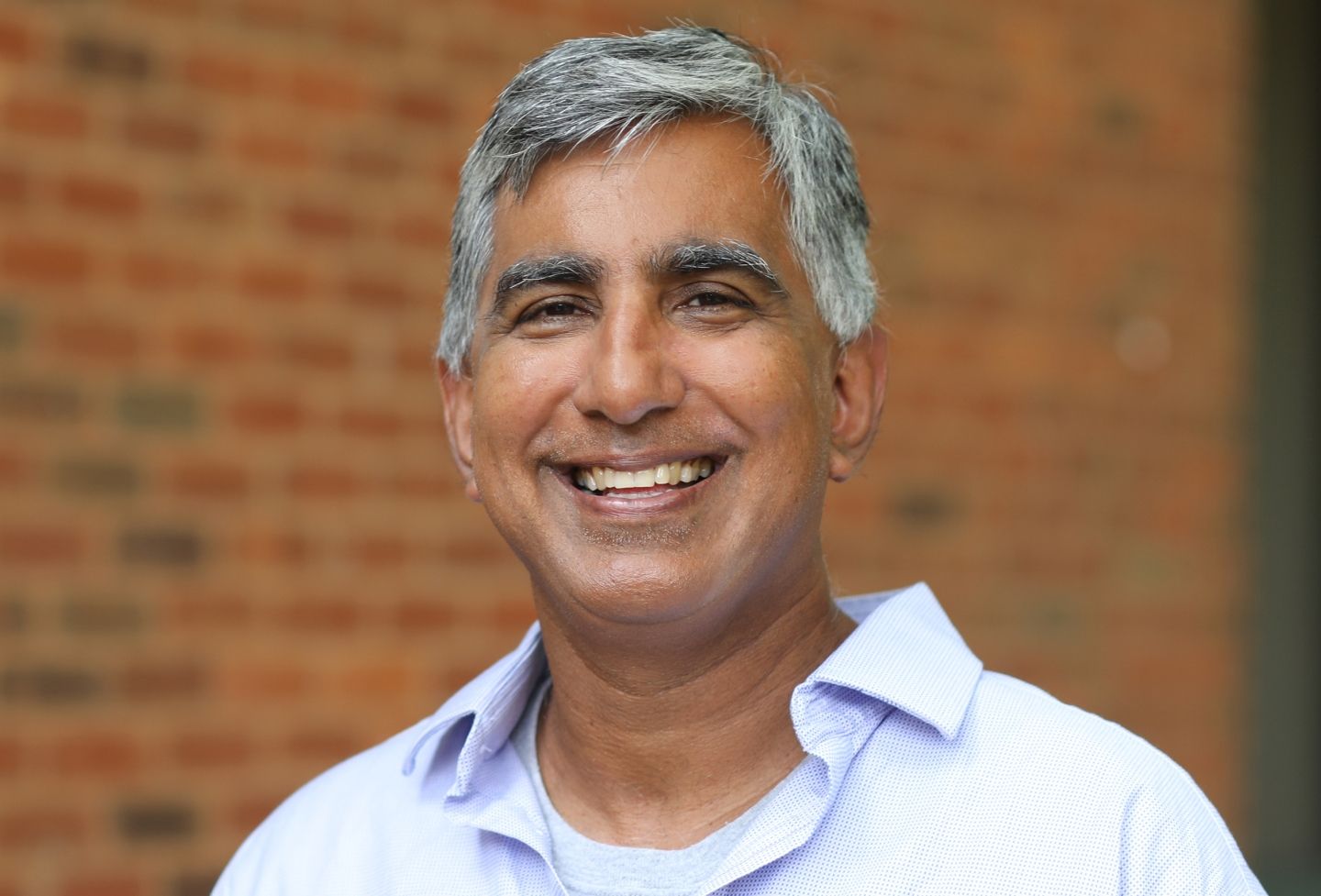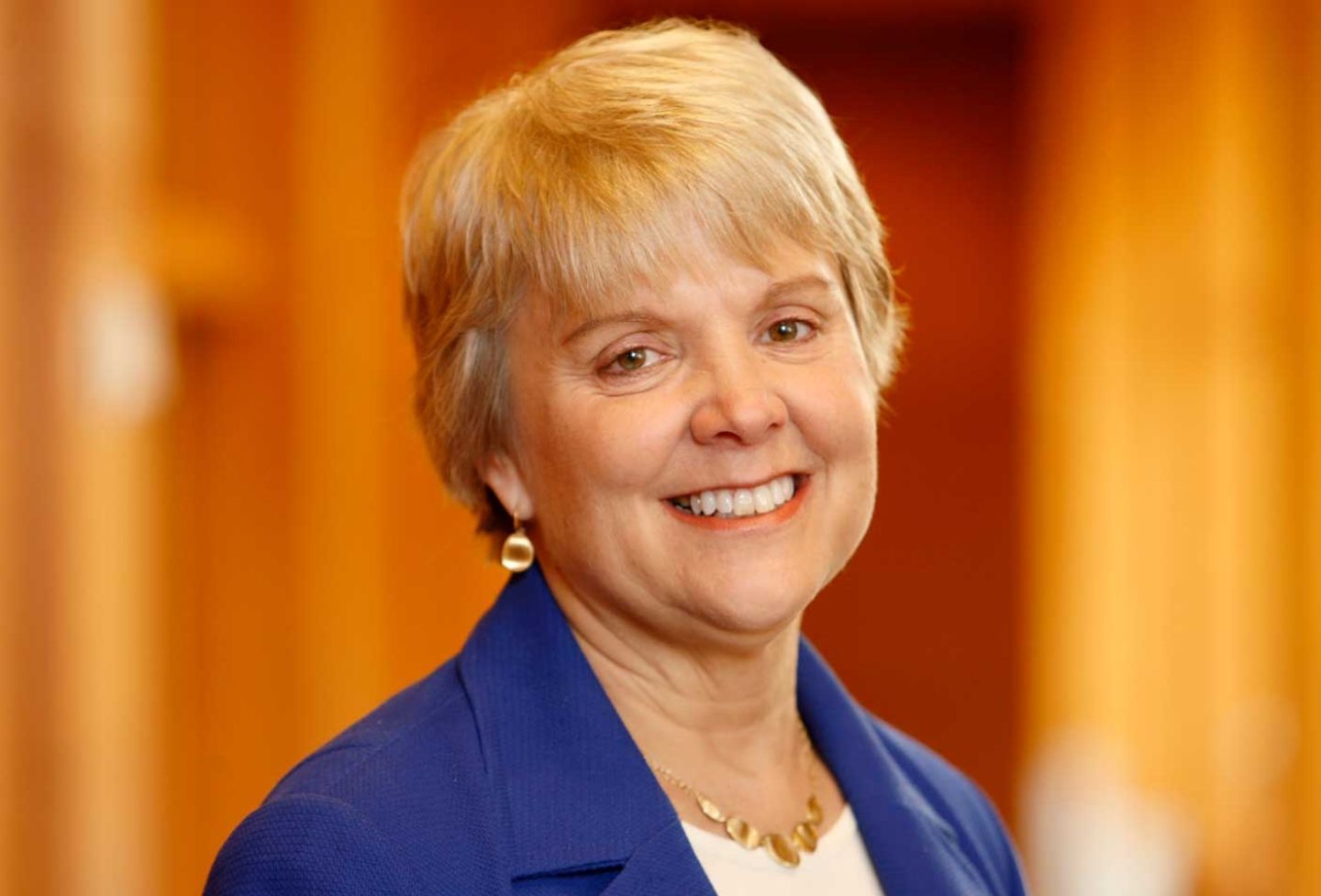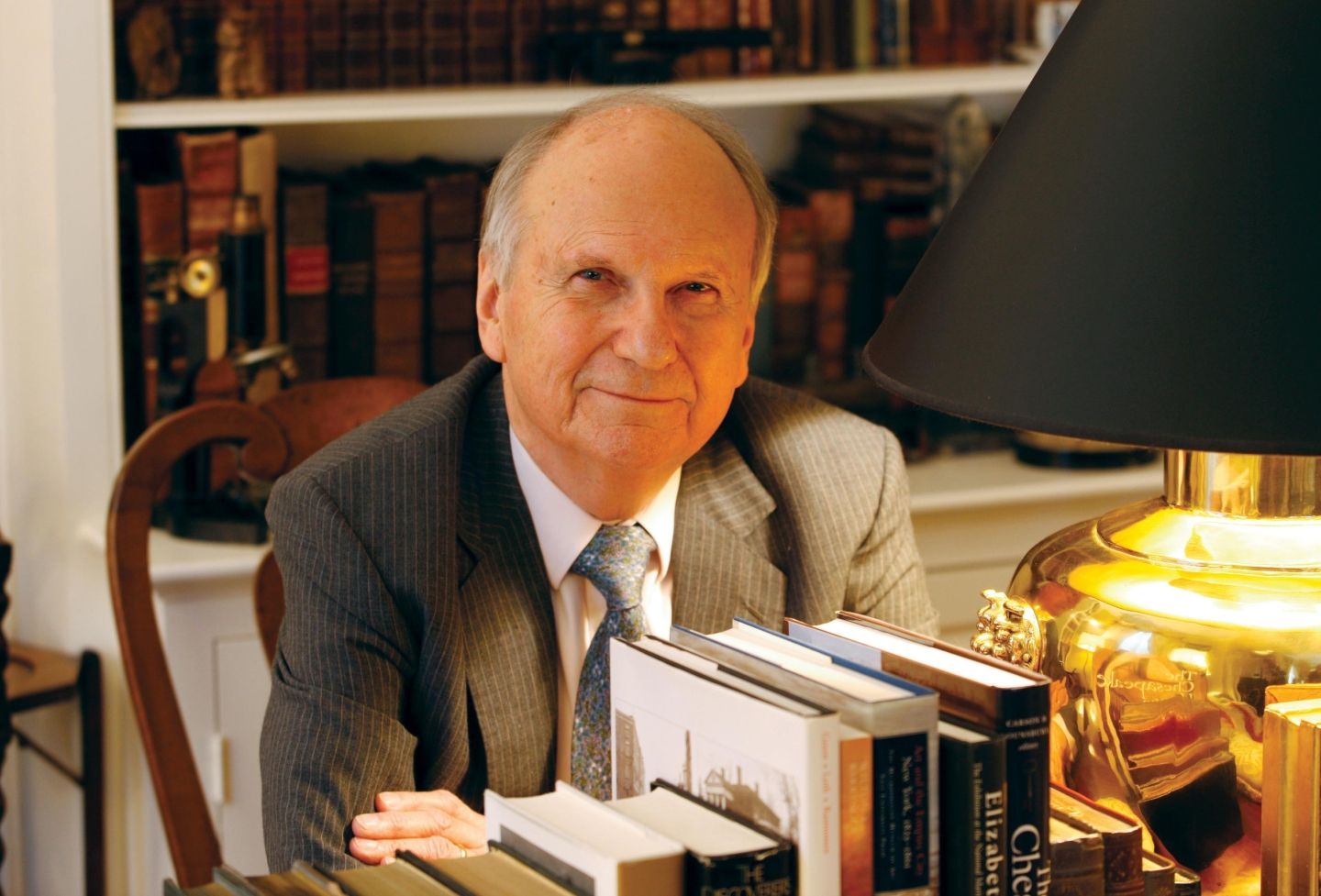Jonathan Z. Cannon, an influential academic voice in environmental law and a former general counsel for the Environmental Protection Agency whose legal memo set the first U.S. Supreme Court decision on climate change into motion, will retire from the University of Virginia School of Law after the semester ends in May.
He exits as the Blaine T. Phillips Distinguished Professor of Environmental Law and the inaugural director of the Law School’s Program in Law, Communities and the Environment.
He reflected on his career from the attic office of his home in Earlysville, Virginia. Only two small triangular windows are there to remind him that, instead of working on a paper, for example, he could be spending time outdoors. He’s an avid hiker, biker and runner.
“I’ve always liked to be outdoors,” he said. “I’ve found release there, enjoyment, just pleasure. It’s a very childish pleasure in a way.”
Cannon hasn’t always been an academic. At the start of his career, he was a regulatory lawyer and litigator with the environmental firm now known as Beveridge & Diamond. He was hired by co-founder William Ruckleshaus, the first administrator of the EPA, who was a highly respected figure in the field and boasted the added distinction of having been fired in the infamous “Saturday Night Massacre” of the Nixon administration.
“I was the first full-time associate to show up at that firm,” Cannon said. “It was an environmental law practice, but not a practice in which the primary focus was saving the environment.”
Eleven years later, though, he got his chance to do just that by joining the EPA.
Becoming, in his words, a “utility player” capable of taking on different roles at the agency, he held several senior management positions as a career official under Presidents Ronald Reagan and George H.W. Bush, before his political appointment as general counsel in the Clinton administration.
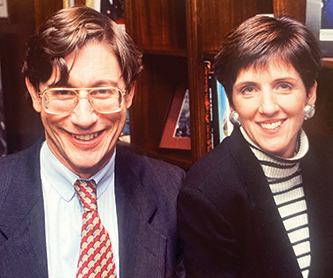
During that service, from 1995 to 1998, Cannon wrote the six-page legal memo on which the Supreme Court case Massachusetts v. EPA hinged. The head of the EPA at the time, Carol Browner, asserted before Congress that the EPA had the power to regulate greenhouse emissions. Cannon backed up her assertion in his memo: If the agency were to determine endangerment to Americans under the Clean Air Act, because of the act’s broad definition of a pollutant, the EPA could legally regulate carbon dioxide emitted from cars and industry, among other sources.
The forces in opposition to regulation were strong, however. A 2006 television commercial from a lobbying group attempted to spin carbon dioxide as a win-win for the environment, with the tag line, “They call it pollution. We call it life.”
“And you know pretty much who the ‘we’ and ‘they’ are in that, right?” Cannon said in a May 2007 Law School talk. “I was the ‘they.’”
That year, the Supreme Court in the Massachusetts case affirmed that the EPA has the legal authority to establish and enforce climate policy — and specifically to regulate emissions of greenhouse gases.
“Stunning,” Georgetown law professor Richard Lazarus wrote as his first word on the ruling for his article “A Breathtaking Result for Greens” in The Environmental Forum.
The case led to new, tougher auto emission standards adopted by the Obama administration.
The Law School invited Cannon to serve as a visiting professor for a year following his service as general counsel, and hired him full-time before the year was out, in 1998.
For more than a dozen years before his full-time appointment, Cannon had served as an adjunct professor at the Law School. He chose UVA not only because of its reputation for excellence and collegiality, he said, but also for its surrounding outdoor environments, the Piedmont and the Blue Ridge.
“I would come down on Friday afternoons and teach again on Saturday mornings and then go into the mountains and hike, and sometimes [my wife] Alice and the kids would come,” he said.
Over time, he learned to appreciate how the community allowed professors and students to focus on education with minimal distractions — a testament, in his view, to how the school is managed. He launched the school’s first Program in Environmental and Land Use Law soon after he arrived.
Given his variety of experiences, does he think of himself as a public servant, an environmental lawyer or a law professor?
“I think of myself as a teacher,” he said. “People call me ‘professor,’ and it still seems a little strange. I think of myself as a teacher who writes in the environmental law field but still has connections to the worlds of practice and policy. I try to keep in touch with all of those areas. I’m not a scholar in the way that someone who has devoted their life to that work is a scholar, but grateful to have had the time to reflect on my chosen field and contribute my thoughts.”
Cannon has taught courses such as Environmental Law, Climate Change Law and Policy, and Land Use Law at UVA, while also juggling his scholarship and volunteer roles, including memberships on the board of directors of the Environmental Law Institute and the Advisory Board of the Policy Integrity Institute.
“As far as teaching goes, I’m getting as much benefit out of it as I’m giving,” he said. “It’s work, but it’s enjoyable work. I love teaching and the connection with young people coming into the field.”
Among his former pupils is Professor Cale Jaffe ’01, who went on to lead the Virginia office of the Southern Environmental Law Center before returning to the Law School to teach and run its environmental law clinic.
“I first came to know Jon Cannon in the fall of 1998, when I was a first-year law student looking into summer job opportunities,” Jaffe said. “I remember being incredibly nervous about approaching him. But my nervousness quickly melted away during our first meeting. For someone with such a prominent reputation on national environmental policy, he was remarkably easygoing and approachable.”
Jaffe ended up working as a research assistant to Cannon, who has remained a mentor.
“There wasn’t a career or clerkship-related decision I made without first seeking his advice,” Jaffe said. “I continue to seek Jon’s counsel not just because of his incredible legal acumen, but because he is such a kind, earnest and charitable person.”
Cannon’s work has spanned multiple scales. He has been among the voices who have pushed over the years for government action on climate change at all levels, including through his work with the National Academy of Sciences. He has taught and written widely on federal environmental regulation, but more recently, his focus has shifted to the local.
“I’ve come to appreciate how much the work of environmental protection is specific to local landscapes and particular places,” he said.
With that recognition, Cannon helped create a new program housed at the Law School to examine, and hopefully help solve, community-level environmental dilemmas. The Program in Law, Communities and the Environment, or PLACE, not only represents the courses and activities of the former environmental and land use law program he started, but it adds new dimensions. Funded in part by the Henry L. & Grace Doherty Charitable Foundation, PLACE targets resources toward teaching and interdisciplinary research on questions of environmental law and social justice as they relate to diverse communities and places across the globe.
It’s no coincidence that the word “place” doubles as a synonym for community. Cannon has worked hard to build that sense of shared purpose and belonging over time.
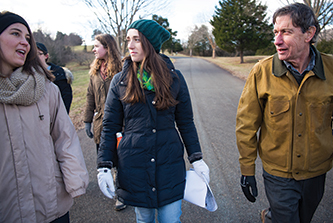
Sarah Buckley ’14, a trial attorney with the U.S. Department of Justice’s environmental and natural resources division, is among former students who noted the connection.
“Professor Cannon was instrumental in setting me on a path to an environmental law practice,” Buckley said. “He created a community for students interested in the field and always had an open door for both students and visiting alumni. I’m so grateful to have had the benefit of his mentorship and hope the new stewards of the environmental law program at UVA continue his legacy.”
Cannon is the author of the book “Environment in the Balance: The Green Movement and the Supreme Court.” He also co-authored the book “Reclaiming the Land: Rethinking Superfund Institutions, Methods and Practices” with former student Gregg P. Macey ’06.
Among the projects he’ll be working on in his retirement is “a memoir of place” that no doubt will include his time at the University.
“I think the Law School is a wonderful institution, and I’ve been in private practice and government service,” Cannon said. “The Law School is the most supportive, humane and productive environment.”
Cannon’s path to law and the Law School was influenced by his father, a geologist and mining engineer, as well as his stepfather, a chief justice on the Maryland Court of Appeals.
“He was a model for me, and kind of embodied the law in a way,” Cannon said.
Cannon’s mother, an avid gardener, also chose a fateful middle name for her son, as a way of keeping a family name alive: “Zenas.” The name originates in the Bible. Zenas the Lawyer was “a bit player,” Cannon said, mentioned once in the book of Titus.
Cannon said those influences, and a community cleanup of the Potomac River he took part in in Hagerstown, Maryland, in 1970, on the first Earth Day, all led him to study environmental law.
“I was moved by the showing of broad popular support for the environment,” he explained. “That was an important moment. Earth Day demonstrated to people who privately nurtured concerns about the environment that lots of others shared those concerns and there was the potential for effective action.”
Cannon attended the University of Pennsylvania Law School, then clerked for Judge David L. Bazelon of the U.S. Court of Appeals for the District of Columbia Circuit.
Founded in 1819, the University of Virginia School of Law is the second-oldest continuously operating law school in the nation. Consistently ranked among the top law schools, Virginia is a world-renowned training ground for distinguished lawyers and public servants, instilling in them a commitment to leadership, integrity and community service.
